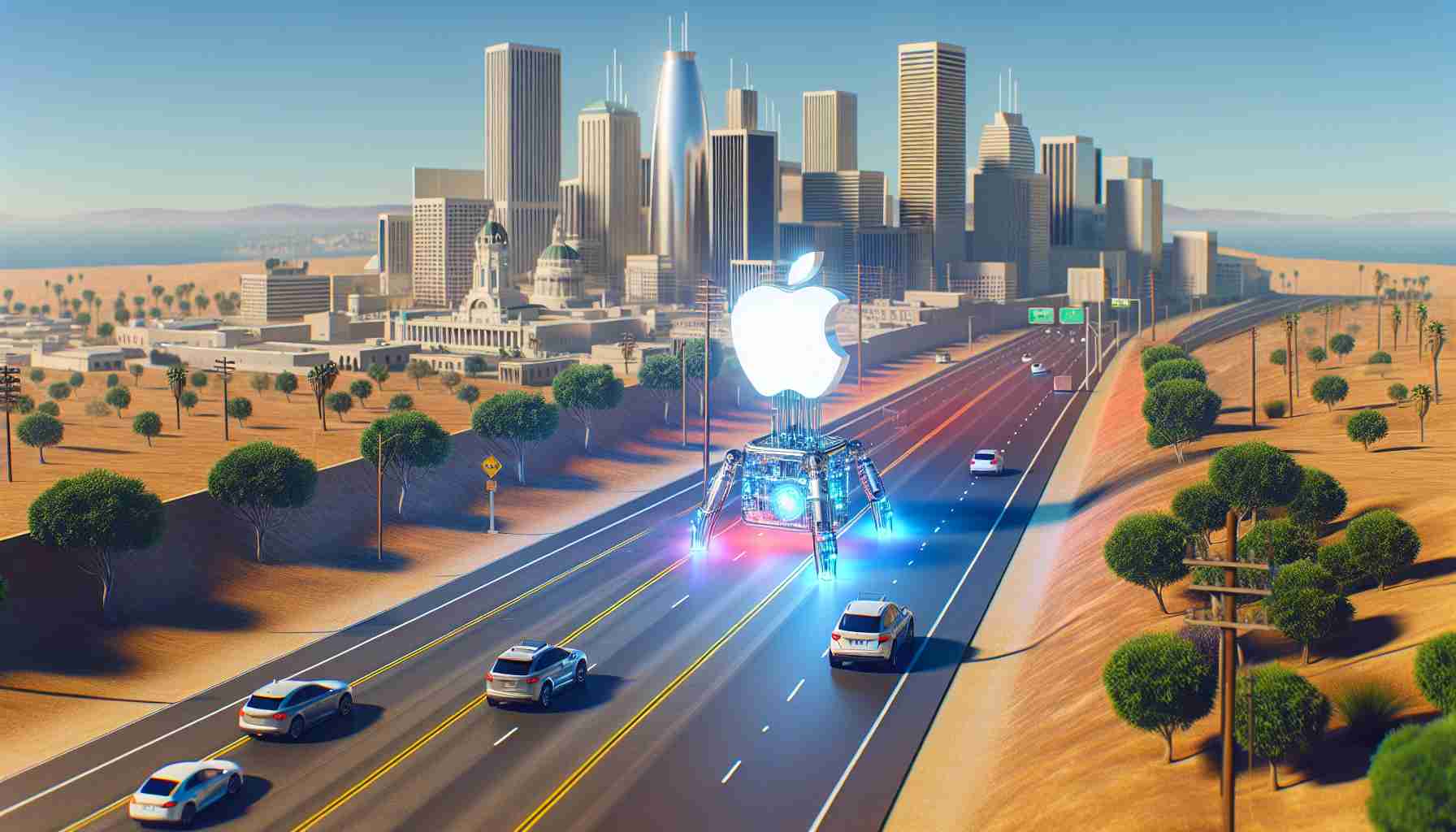Apple’s autonomous vehicle project has been shrouded in secrecy for the past six years, leaving the public with little knowledge of its progress. However, recently submitted records reveal that Apple significantly increased its autonomous testing efforts in California last year. The company nearly quadrupled the number of miles it tested on public roads compared to 2022, and surpassed 2021’s total by over 30-fold.
The data, which spans from December 2022 to November 2023, shows that the majority of Apple’s testing occurred in the second half of the reporting period, with the peak in August where they tested 83,900 miles. In order to conduct these tests, Apple obtained a permit to test autonomous vehicle technology on California’s public roads, but with a safety driver present behind the wheel. This initial step allows autonomous vehicle companies to collect valuable data and assess how their software performs in real traffic conditions.
While Apple’s testing efforts have been commendable, they still fall behind more advanced developers in the autonomous vehicle space. Waymo, for example, logged 3.7 million testing miles in California with a safety driver, and an additional 1.2 million miles without a driver. This is not to mention the over 1.6 million miles Waymo covered with passengers in the car. Similarly, General Motors’ autonomous vehicle division, Cruise, surpassed Apple’s numbers by driving nearly 2.65 million testing miles in California in 2023.
Despite Apple’s progress, recent reports suggest that the company has scaled back its initial ambitions of building a fully autonomous electric car. Instead, Apple is said to be focusing on developing automated driving-assistance features similar to those offered by established automakers like Tesla, Ford, and Mercedes-Benz. These features have automated elements but still require drivers to remain attentive to the road. As a result, the expected launch date of Apple’s scaled-down electric vehicle has been pushed from 2026 to 2028.
It is worth noting that Apple has not responded to requests for comment on these developments. As the autonomous vehicle industry continues to evolve and competitors push the boundaries of innovation, it remains to be seen how Apple’s revised approach will fare in the market.
FAQ Section:
Q: What is Apple’s autonomous vehicle project?
A: Apple’s autonomous vehicle project refers to the company’s efforts to develop self-driving cars.
Q: How much did Apple increase its autonomous testing efforts in California last year?
A: Apple nearly quadrupled the number of miles it tested on public roads in California compared to the previous year.
Q: When did Apple conduct the majority of its testing?
A: The majority of Apple’s testing occurred in the second half of the reporting period, with a peak in August.
Q: Did Apple obtain a permit to test autonomous vehicle technology on California’s public roads?
A: Yes, Apple obtained a permit to test autonomous vehicle technology on California’s public roads, but with a safety driver present.
Q: How do autonomous vehicle companies benefit from testing with a safety driver?
A: Testing with a safety driver allows autonomous vehicle companies to collect valuable data and assess how their software performs in real traffic conditions.
Q: How does Apple’s testing efforts compare to other companies?
A: Apple’s testing efforts are behind more advanced developers in the autonomous vehicle space, such as Waymo and Cruise, who have logged significantly higher testing miles.
Q: What is Waymo’s testing record in California?
A: Waymo has logged 3.7 million testing miles in California with a safety driver, and an additional 1.2 million miles without a driver. They have also covered over 1.6 million miles with passengers in the car.
Q: What are recent reports suggesting about Apple’s autonomous vehicle ambitions?
A: Recent reports suggest that Apple has scaled back its initial ambitions of building a fully autonomous electric car, and is instead focusing on developing automated driving-assistance features.
Q: How do these automated driving-assistance features differ from fully autonomous vehicles?
A: Automated driving-assistance features, like those offered by Tesla, Ford, and Mercedes-Benz, have automated elements but still require drivers to remain attentive to the road.
Q: Has Apple confirmed these reports?
A: Apple has not responded to requests for comment on these developments.
Definitions:
– Autonomous vehicle: A vehicle capable of operating without human input, often referred to as a self-driving car.
– Testing miles: The distance covered by an autonomous vehicle during testing on public roads.
– Safety driver: A human driver present in an autonomous vehicle during testing to ensure the safety of the vehicle and its occupants.
– Automated driving-assistance features: Features in a vehicle that assist the driver with tasks like steering, braking, and acceleration, but still require the driver to remain attentive and in control of the vehicle.
Suggested related links:
– Apple’s Official Website
– Waymo’s Official Website
– General Motors’ Official Website
– Tesla’s Official Website
– Ford’s Official Website
– Mercedes-Benz’s Official Website

